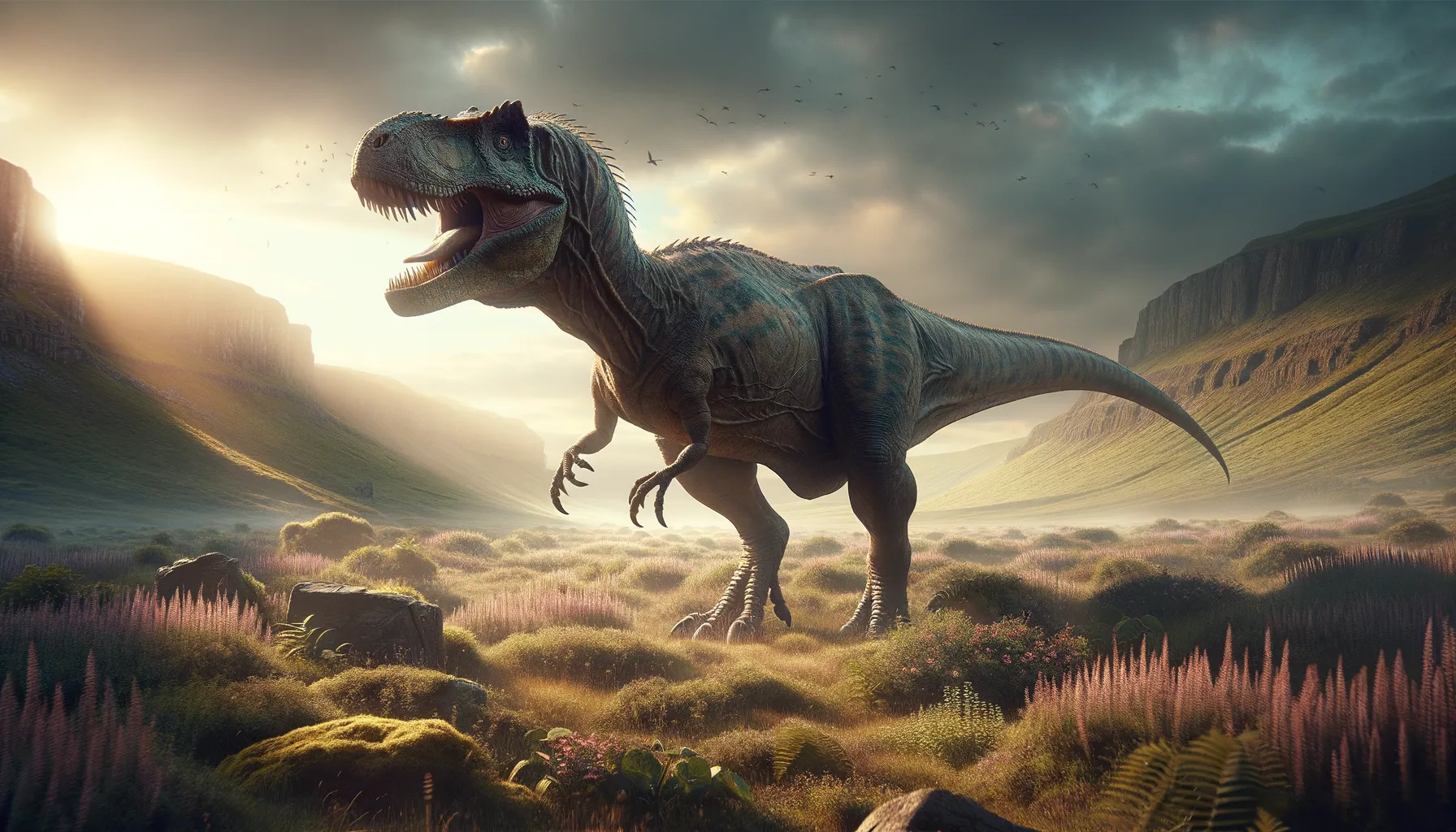
Eotyrannus
Swift predator of the Cretaceous forests.
Period
Cretaceous
Length
About 4 meters long.
Height
Around 1.5 meters at the hips.
Weight
Approximately 500 kilograms.
Eotyrannus is an early member of the tyrannosaur family, known for its moderate size and bird-like features. This dinosaur roamed Europe during the Early Cretaceous period. Its fossils were first uncovered in the 1990s, providing valuable insights into the evolution of larger tyrannosaurs. Eotyrannus was a bipedal carnivore, possessing sharp teeth and claws adapted for hunting. Despite its relative obscurity, it plays a crucial role in understanding the ancestry of the mighty Tyrannosaurus rex.
Diet
Eotyrannus was a carnivore, preying on smaller animals. Its sharp teeth were ideal for slicing through flesh. It likely hunted in packs to take down larger prey.
Hunting
Eotyrannus is believed to have been an agile hunter, using speed and stealth to approach its prey. Its long legs suggest it could have used short bursts of speed to catch up with fleeing animals.
Environmental challenges
Eotyrannus lived in a dynamic environment with varying climates and ecosystems. It faced competition from other predators and needed to adapt to different prey availability. Foraging required keen senses and collaboration with other pack members, possibly strengthening social bonds. Changing sea levels and volcanic activity could have periodically altered its habitat, affecting food resources.
Speed
Moderate, capable of swift sprints.
Lifespan
Estimated around 20 to 25 years.
First discovery
Discovered on the Isle of Wight in 1997.
Fun Facts
- Eotyrannus means 'dawn tyrant', suggesting it was an early relative of the famous Tyrannosaurus rex.
- This dinosaur roamed the Earth about 125 million years ago during the Early Cretaceous period.
- Eotyrannus was discovered on the Isle of Wight, a small island off the southern coast of England.
- Unlike its larger relatives, Eotyrannus was relatively small, estimated to be around 13 to 15 feet long.
- It had long arms with three-fingered hands, which were probably helpful in grasping prey.
- Eotyrannus is known from a single fossil specimen, making every bone a treasure for paleontologists.
- Scientists believe Eotyrannus was a fast runner, capable of chasing down other small dinosaurs and fleeing larger predators.
Growth and Development
Like many theropods, Eotyrannus would hatch from eggs and grow rapidly during its early years. Juveniles likely relied on older pack members for protection until they could fend for themselves. Its growth patterns helped paleontologists understand the ontogeny of tyrannosaurids. Fossil analysis suggests it reached maturity in just a few years, indicative of a fast-paced life cycle.
Habitat
Eotyrannus inhabited lush, forested environments on the Isle of Wight. These habitats provided ample cover for hunting and evading larger predators. The proximity to water sources supported diverse plant and animal life, crucial for its survival. Seasonal changes in vegetation and climate would have influenced its migratory and hunting behaviors.
Interaction with other species
Eotyrannus coexisted with various herbivorous dinosaurs, competing with them for resources. Predatory interactions were complex, involving strategic pack hunting and territorial displays. Fossil evidence suggests occasional confrontations with other theropods. Its presence in the ecosystem played a significant role in balancing prey populations.
Natural lifespan
Eotyrannus lived naturally for about 20 to 25 years.
Reproduction
Eotyrannus, like other dinosaurs, reproduced by laying eggs. Nests were possibly built in secluded areas to protect the eggs from predators. Speculative findings suggest parental care, albeit limited, may have been exhibited by adult Eotyrannus for their offspring. The reproductive strategy would have emphasized producing multiple eggs to ensure at least some offspring reached maturity.
Social behaviour
Eotyrannus might have exhibited pack behavior, which would have facilitated cooperative hunting. Social structures are theorized based on fossilized footprints indicating group movement. Communication within packs could have included visual displays and vocalizations. Such behaviors would have been key in establishing territories and maintaining cohesion within groups.
Fossil locations
Eotyrannus fossils have primarily been discovered on the Isle of Wight, located off the southern coast of England. The site is renowned for yielding diverse Cretaceous period fossils. The well-preserved remains have allowed detailed studies into its anatomy and lifestyle. These findings contribute significantly to understanding the evolutionary trajectory of early tyrannosaurs.
